Biology 9 - Water, Carbon and Nitrogen Cycle
1/38
Earn XP
Description and Tags
Name | Mastery | Learn | Test | Matching | Spaced |
|---|
No study sessions yet.
39 Terms
What is transpiration, and how does it start and end?
When plants release water vapor into the atmosphere. It starts as a liquid and ends as a vapor.
What is evaporation, and how does it start and end?
When liquid (water) changes into a gas or vapor and disappears into the air. It starts as a liquid and ends as a vapor.
What is surface runoff, and how does it start and end?
When liquid or frozen precipitation falls and flows over the earth’s surface, picking up and absorbing nutrients (phosphates, nitrogen) as it travels to oceans, lakes, and rivers. It starts as liquid (rain) or solid (ice) and ends in liquid with nutrients (N + P)
What is infiltration, and how does it start and end?
When liquid or frozen precipitation falls and seeps into the soil or plants, eventually becoming either plant water or groundwater. It starts as liquid or frozen precipitation and ends as groundwater and plant water.
What is condensation, and how does it start and end?
When, as vapor forms during evaporation processes, it rises into the air where cooler temperatures cause it to condense into liquid droplets and ice crystals that make up our clouds. It starts as water vapor and ends as liquid (water drops) or solid (ice)
What is precipitation, and how does it start and end?
When air currents move clouds around the globe, and cloud particles collide, grow, and fall out of the sky as liquid or solid rain/snow. It starts as water droplets or ice crystals that form clouds and ends as rain and carbonic acid (acid rain)
What is cellular respiration, and how does it start and end?
When cells break down food molecules, like glucose, in the presence of oxygen (aerobic respiration) to produce energy in the form of ATP, releasing carbon dioxide and water as waste products. It starts as oxygen and glucose and ends in carbon dioxide and water, the beginning form of photosynthesis.
What is photosynthesis, and how does it start and end?
When plants turn light energy into food, water and carbon dioxide to produce oxygen and sugars (glucose) (food). It starts as carbon dioxide and water and ends with oxygen and glucose.
What is deposition, and how does it start and end?
When an organism dies and releases its carbon into the ground, which, after millions of years, becomes fossil fuels. It starts as organic matter and ends as fossil fuels.
What is assimilation, and how does it start and end?
When organisms eat glucose produced through photosynthesis from plants that was picked up by other organisms, which is broken down after cellular respiration into building blocks for macromolecules. It starts as glucose and ends as macromolecules.
What is sedimentation, and how does it start and end?
When CO2 is dissolved by the ocean, converted into calcium carbonate (CaCO3), and is used by organisms for their shells. When those organisms die, they release carbon into the water that sinks down and becomes limestone over time.
What is combustion, and how does it start and end?
When fossil fuels (coal, oil, natural gas, etc.) or forests (organic matter) catch fire/explode, resulting in gas CO2 being released into the atmosphere. It starts as fossil fuels/organic matter and ends as compound CO2
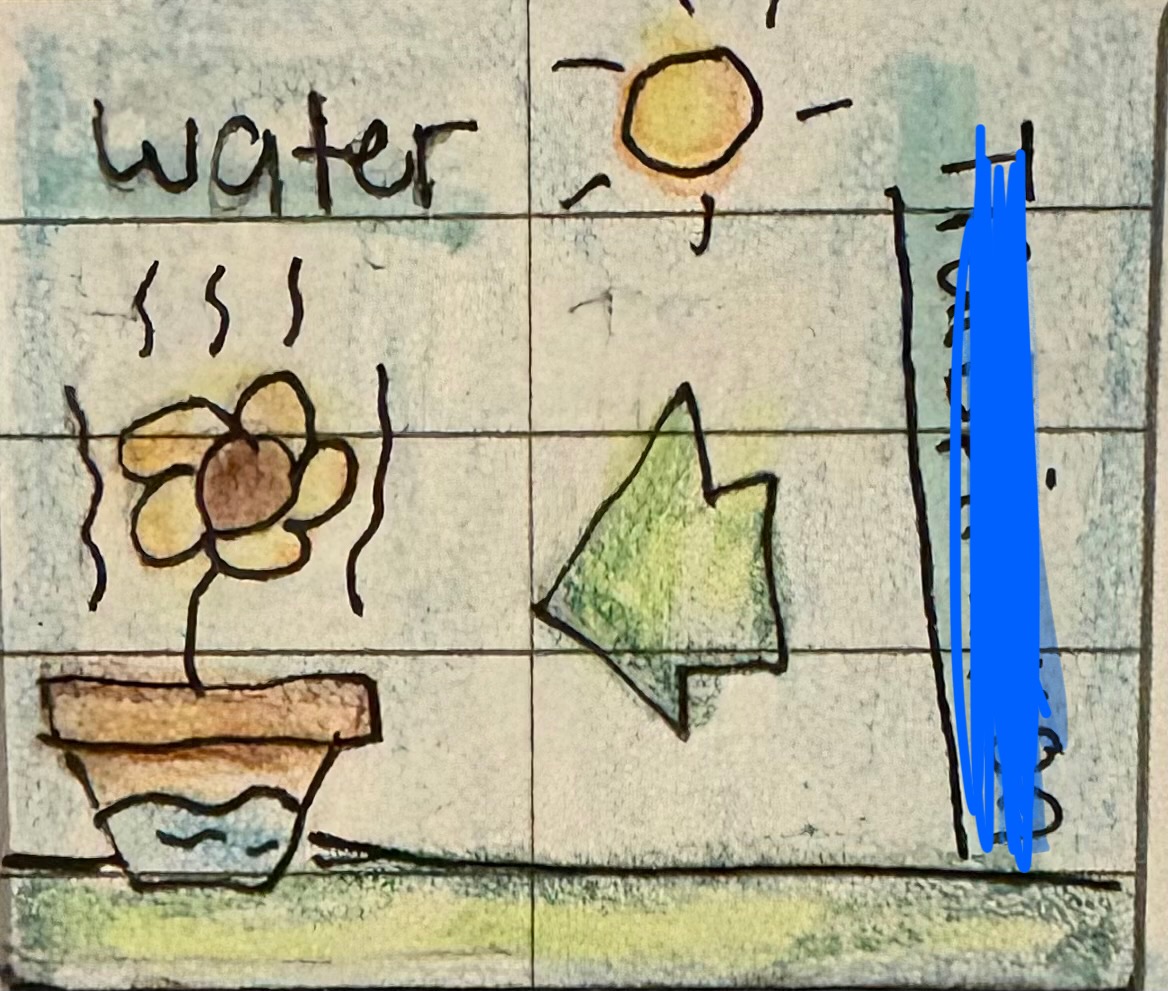
What is this picture representing?
Transcription
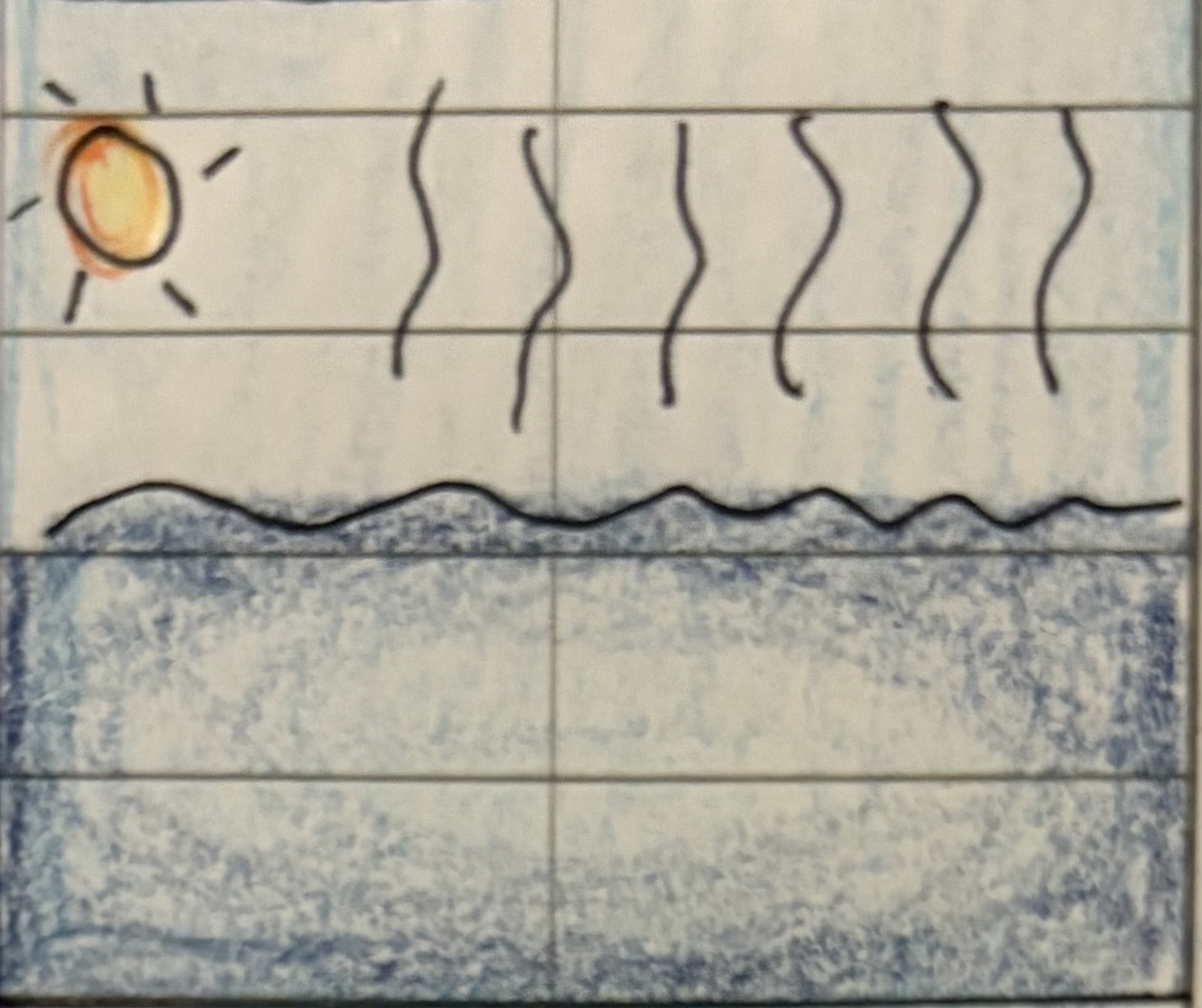
What is this picture representing?
Evaporation
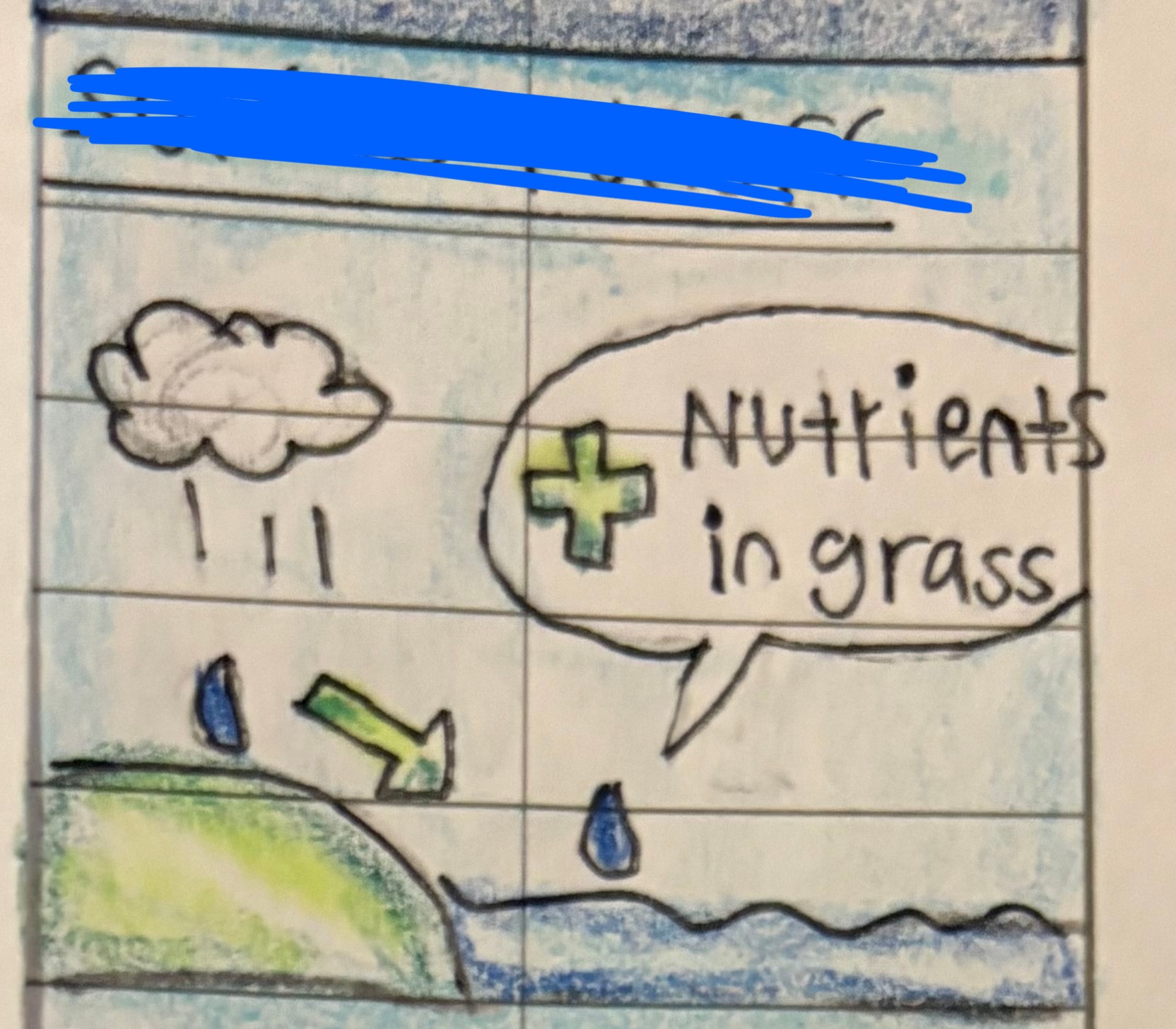
What is this picture representing?
Surface runoff
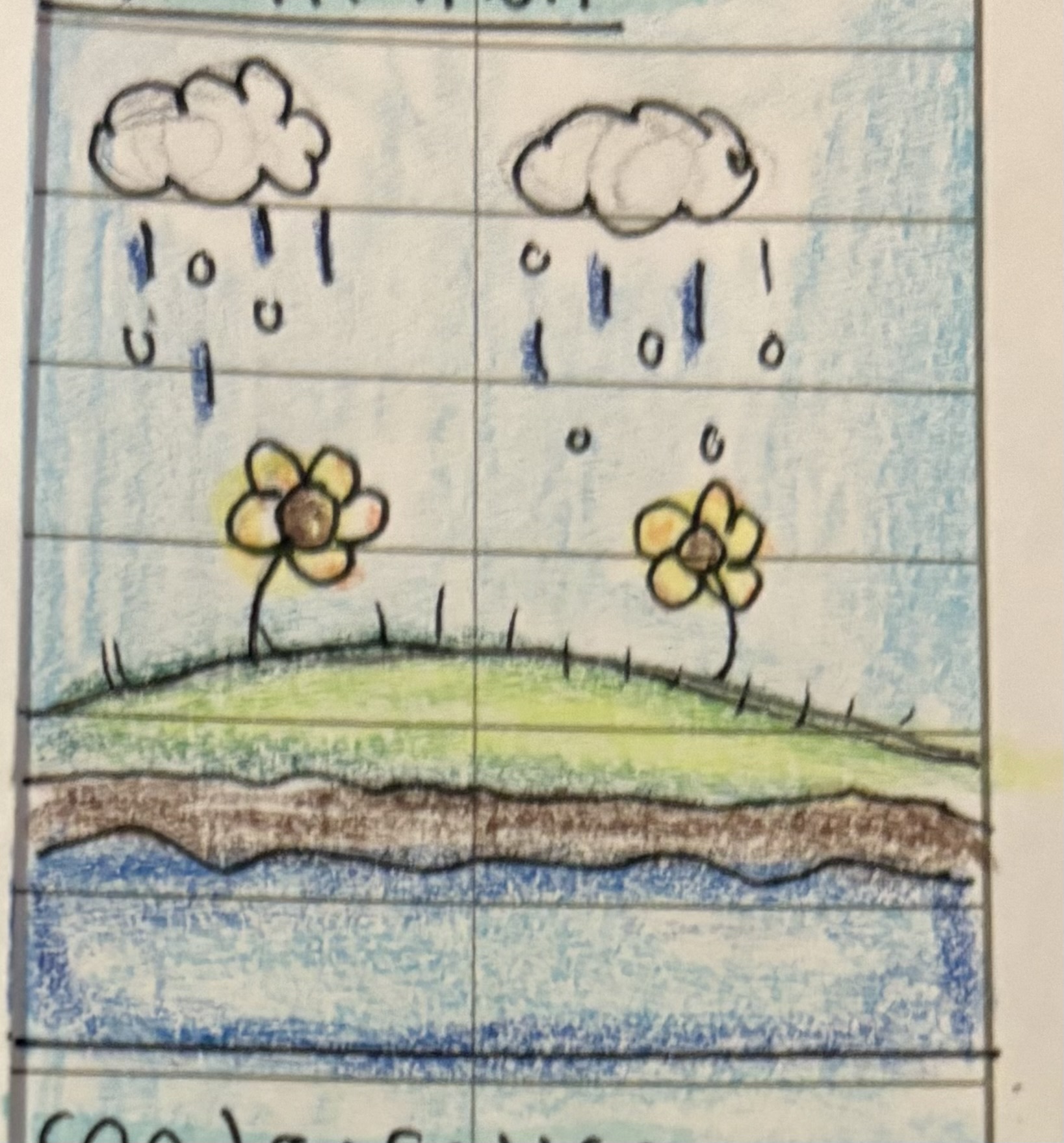
What is this picture representing?
Infiltration
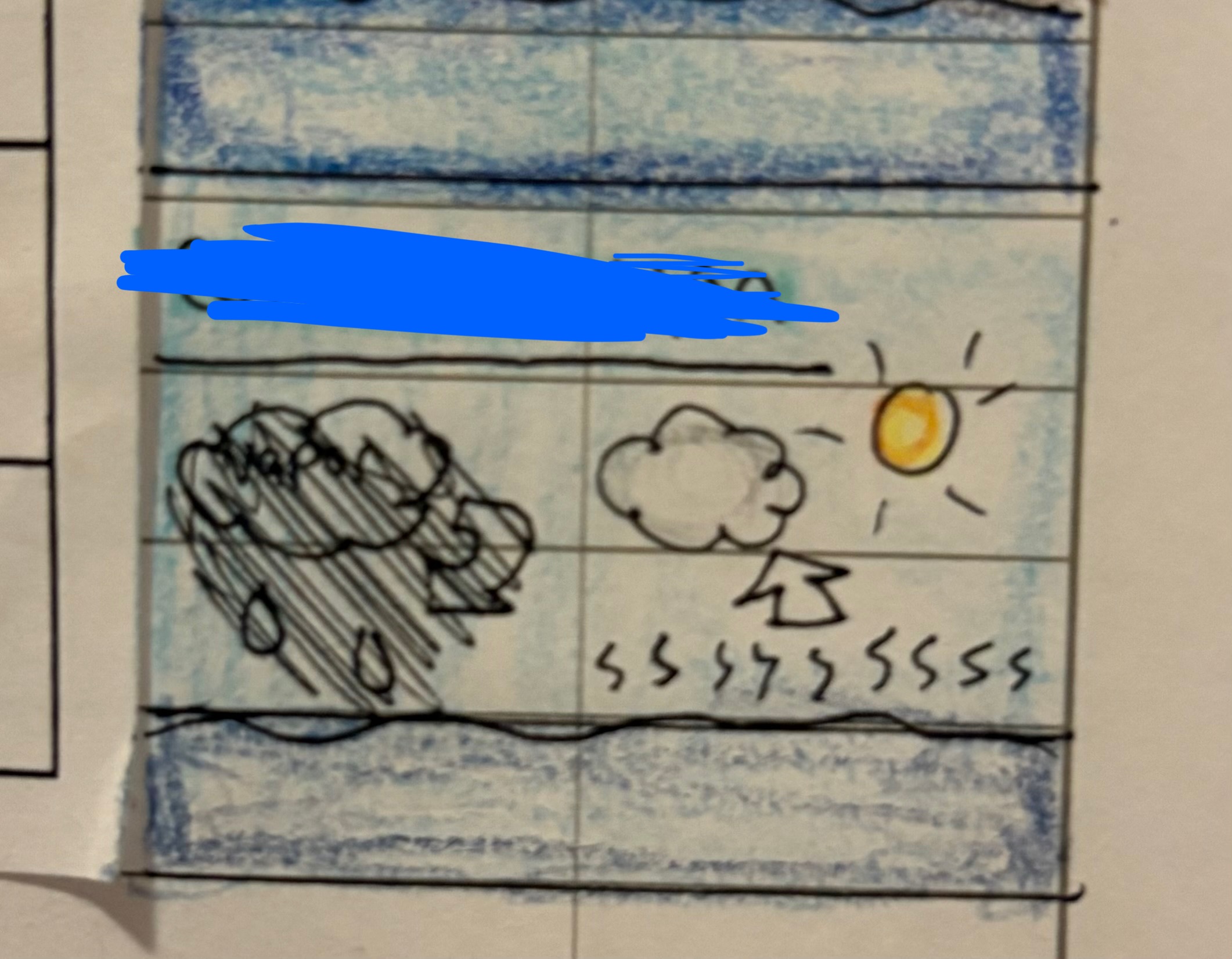
What is this picture representing?
Condensation
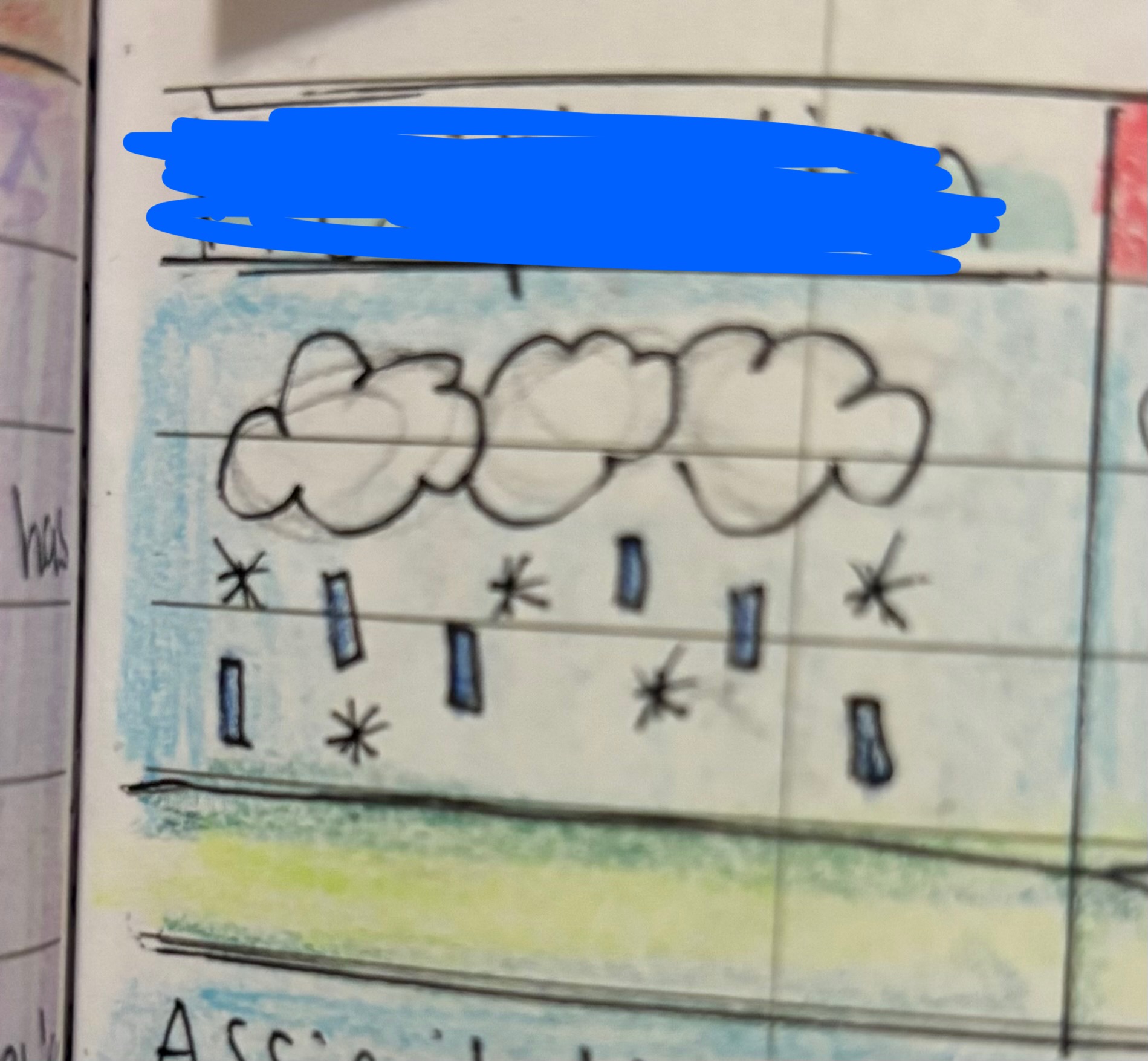
What is this picture representing?
Precipitation
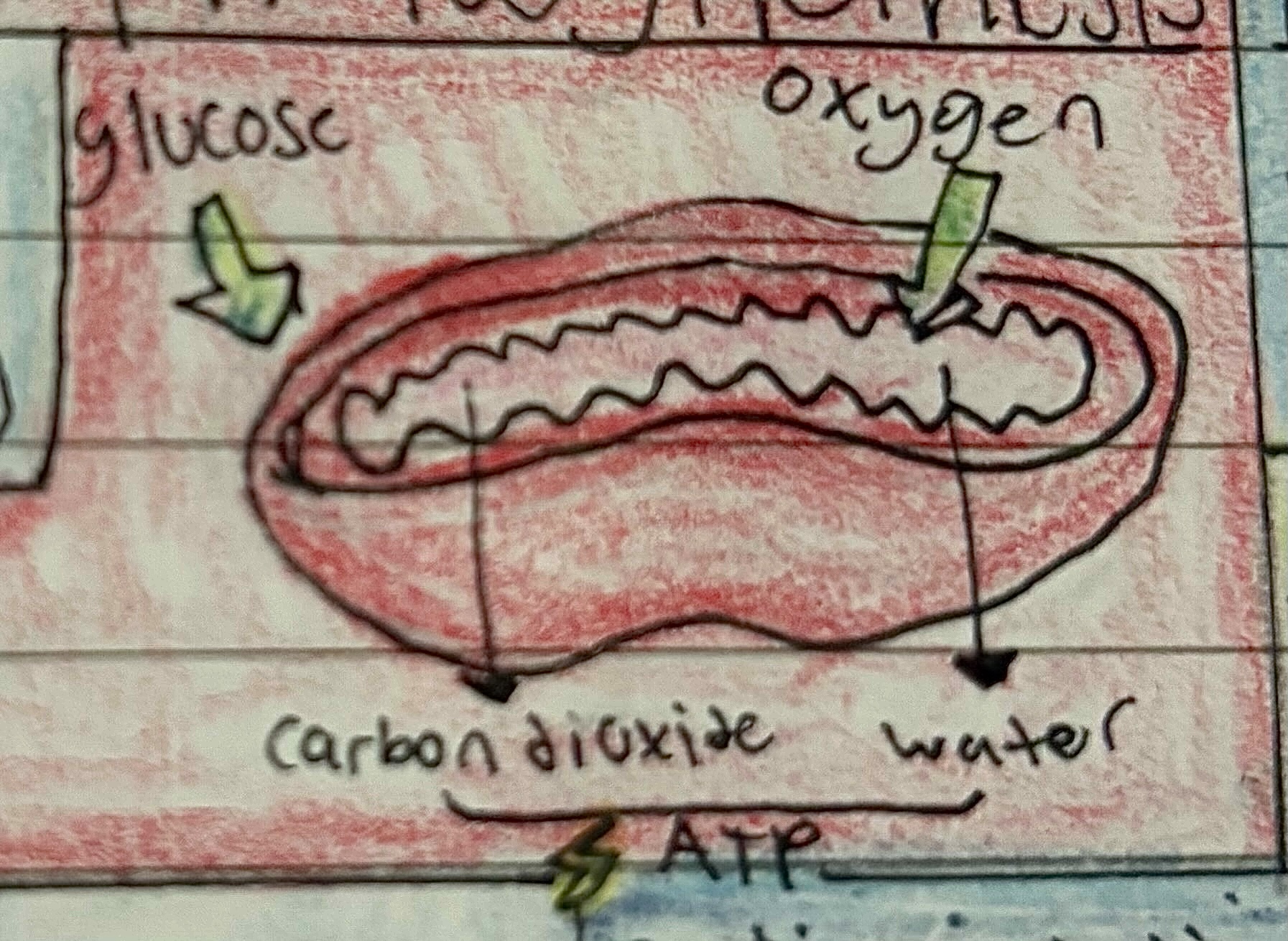
What is this picture representing?
Cellular respiration
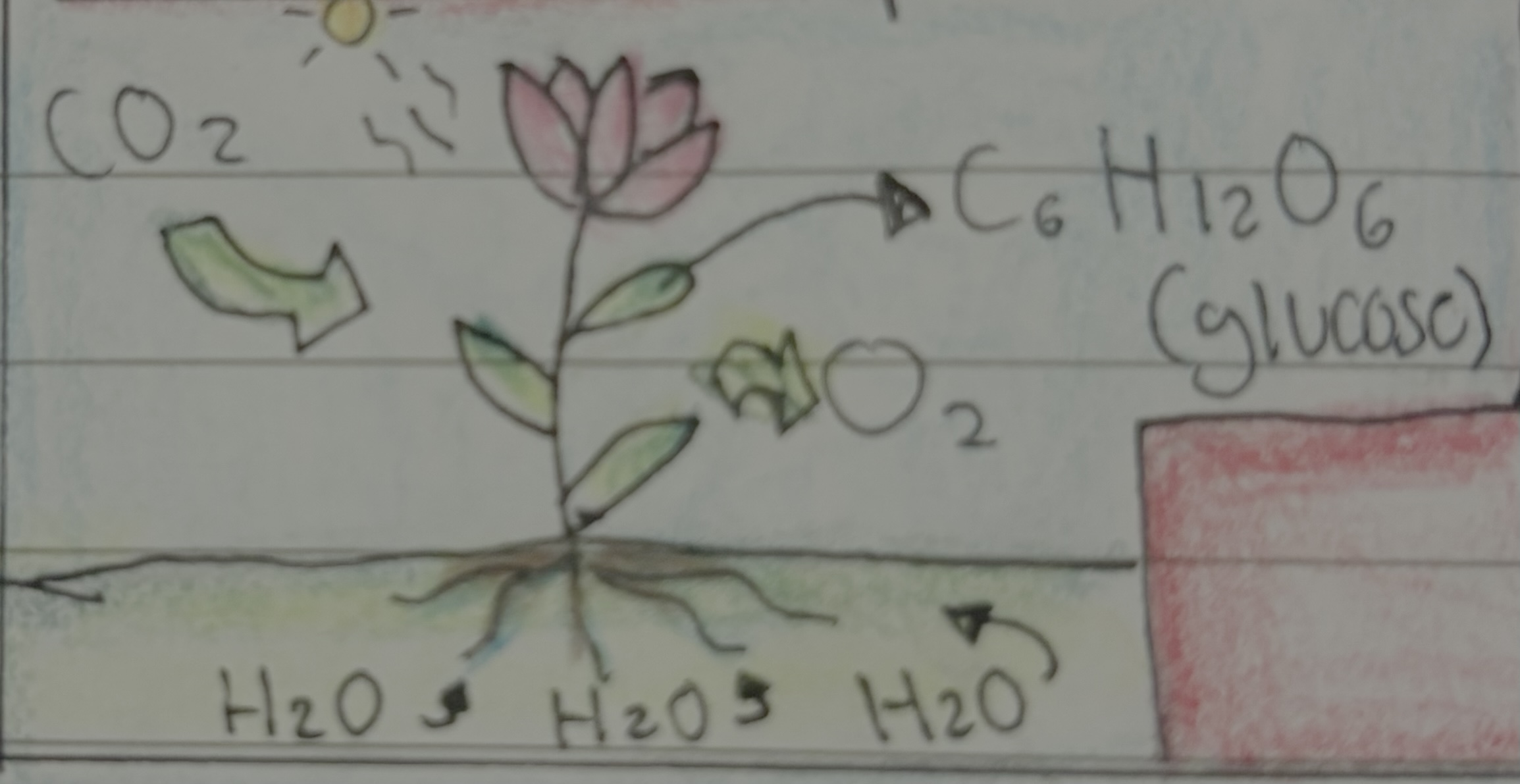
What is this picture representing?
Photosynthesis

What is this picture representing?
Deposition
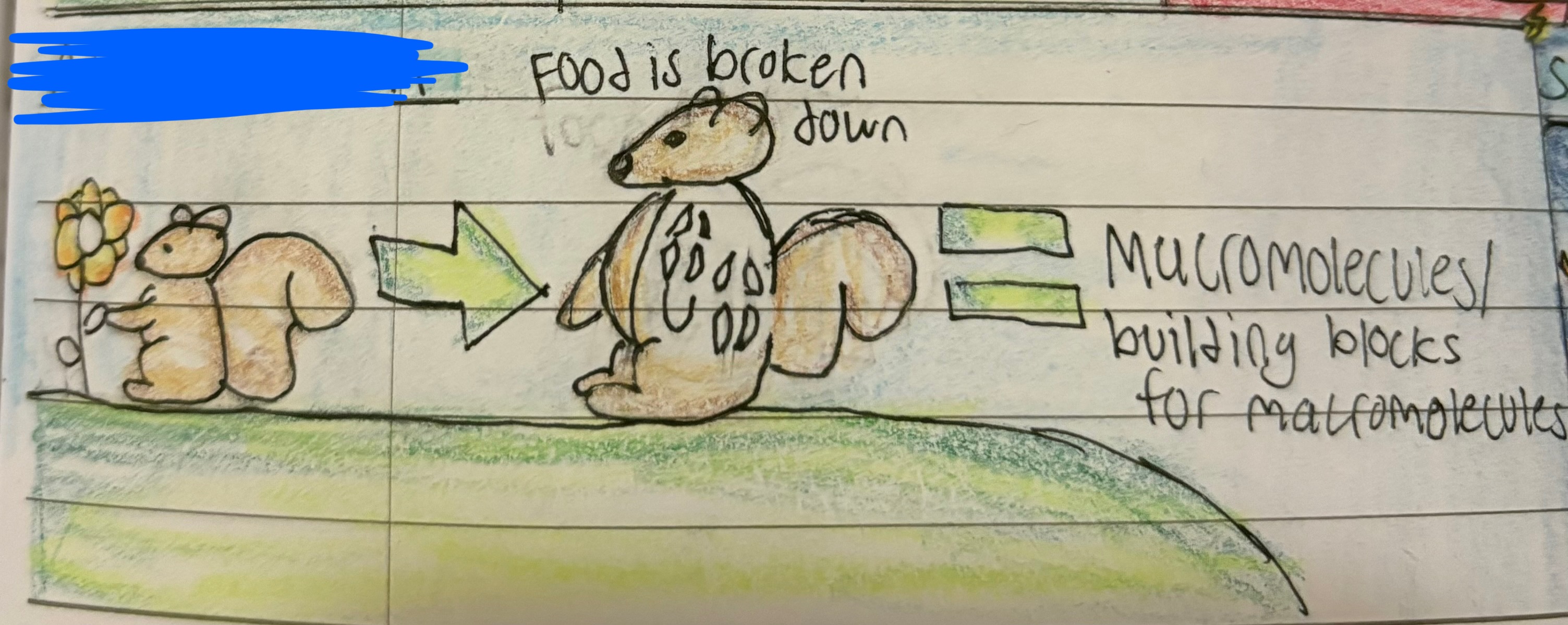
What is this picture representing?
Assimilation
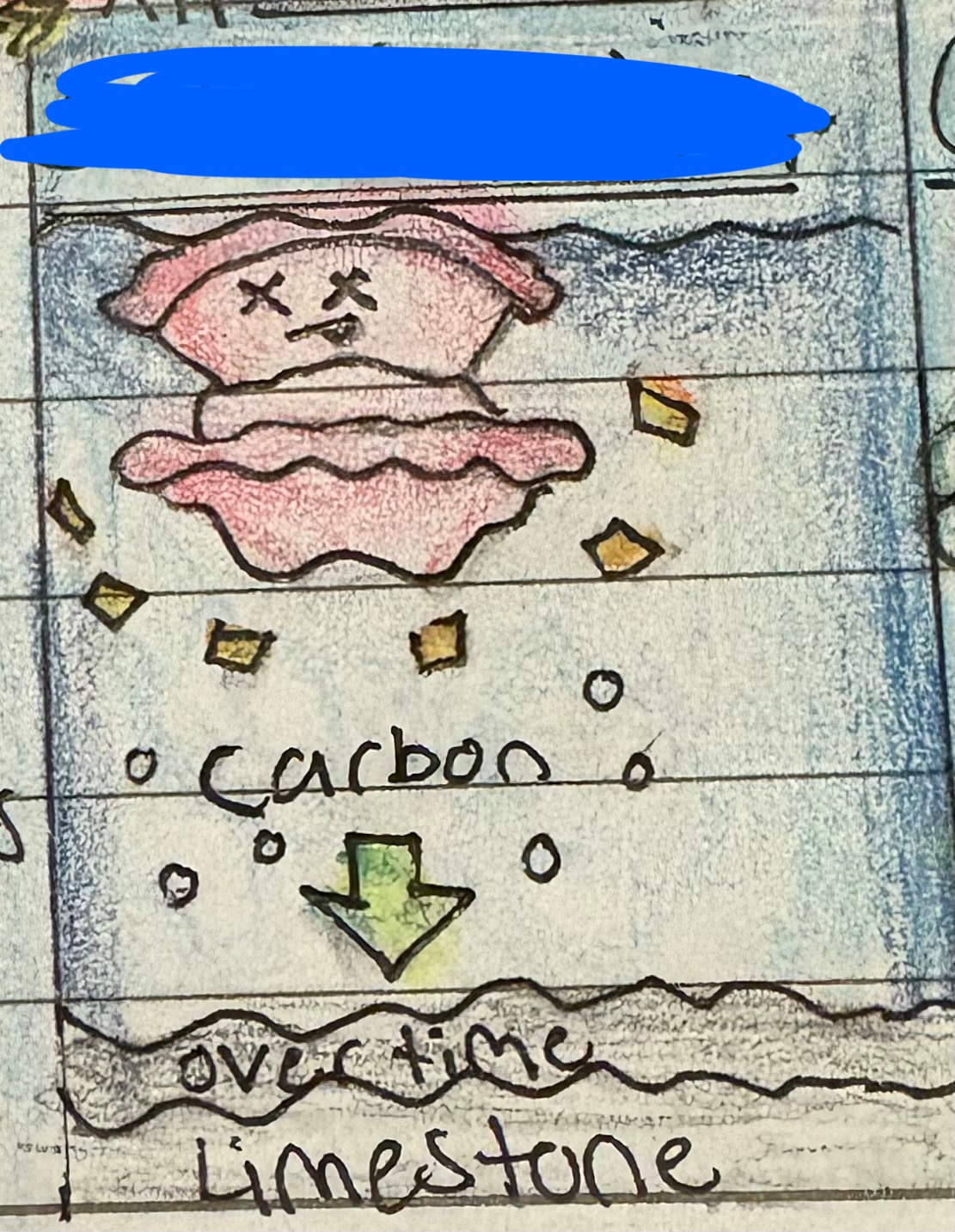
What is this picture representing?
Sedimentation
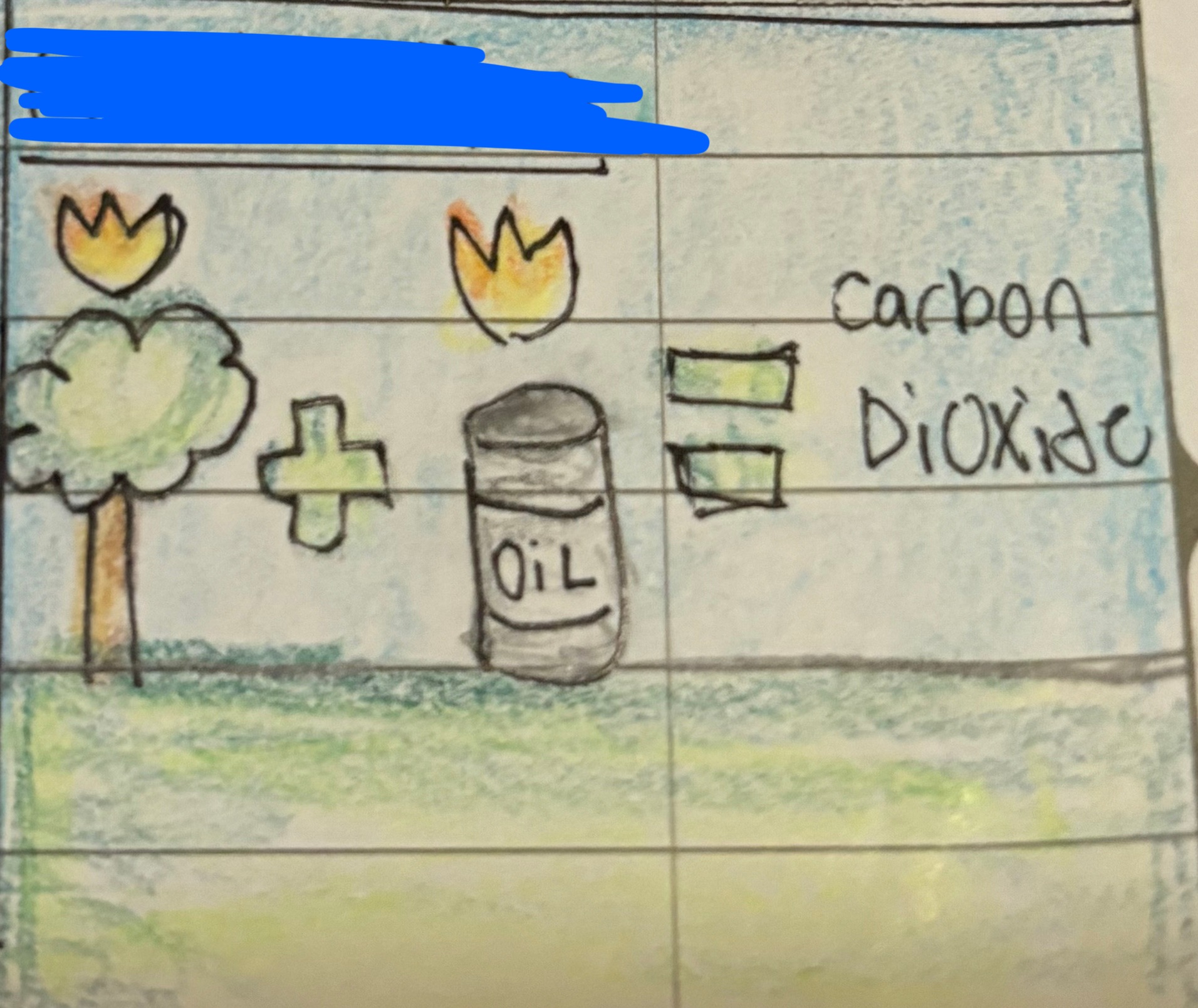
What is this picture representing?
Combustion
How do photosynthesis and cellular respiration relate?
The products of photosynthesis (glucose and oxygen) are the reactants for cellular respiration.
The products of cellular respiration (carbon dioxide and water) are the reactants for photosynthesis.
This creates a cycle where the output of one process is the input for the other, sustaining life on Earth.
What do nucleic acids (CHONP) do?
They are the DNA and RNA that carry genetic info. They are 18% of a cell.
What do Lipids (CHOP) do?
They are a 2nd energy source and protect internal organs. They are 10% of a cell.
What do Proteins (CHON) do?
Growth and repair, and enzymes carry out nearly all chemical reaction in cells. They move essential molecules thru the body. They are 50% of a cell.
What do Carbohydrates do?
They are broken down quickly for energy, and their cellulose provides structure for plants. They are also converted into glucose.
Why does oxygen make up most of our bodies?
We breathe it and its in water
Why does carbon take up 2nd most space in our bodies, and what is its importance to the carbon cycle?
It’s the backbone to all macromolecules, which make up our entire bodies. It’s also the building block for life! All macromolecules (carbohydrates, lipids, proteins, and nucleic acids) have a carbon base, making us carbon-based life forms.
Animals and plants need to constantly take in carbon to use it as a source for energy and to grow.
Why does hydrogen take up 3rd most space in our bodies?
Water is made up of 2 hydrogen bonds. It’s found in most macromolecules and forms important hydrogen bonds
Why does nitrogen take up 4th most space in our bodies?
It’s in 2 marcomolecules—nucleic acids (dna) and proteins
Why does calcium take up 5th most space in our bodies?
It’s found in our bones and teeth
Why does phosphorus take up 6th most space in our bodies?
It’s found in nucleic acids, lipids, and an energy molecule called ATP
What are the pros of increased CO2 emissions?
CO2 is needed by plants to undergo photosynthesis, thus providing plants with more opportunities to create food for themselves and potentially grow larger.
What are the cons of increased CO2 emissions?
Global temps rise = less water availability in ecosystems for organisms to use
Rising temp = organisms to live outside comfort zone = more heat and dehydration deaths.
CO2 dissolves in bodies of water = carbonic acid gets in it = increases the acidity of the water = organisms die from acidic environment.
Global warming = decline in crop yields around the world = increased prices for fruits, vegetables, and other foods.
How could a drought affect the water cycle?
Water cycle processes that decrease in a drought - condensation, precipitation, surface runoff, infiltration
Water cycle processes that increase in a drought - Evaporation and transpiration
How do we get carbon?
We assimilate (eat and break down) carbon that was once part of another living organism